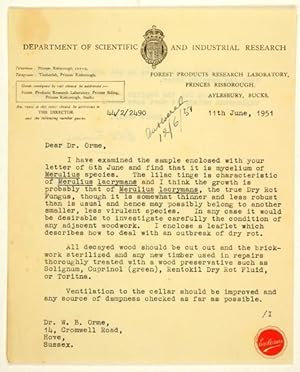findlay walter philip kennedy (6 risultati)
Filtri di ricerca
Tipo di articolo
- Tutti i tipi di prodotto
- Libri (5)
- Riviste e Giornali (Nessun altro risultato corrispondente a questo perfezionamento)
- Fumetti (Nessun altro risultato corrispondente a questo perfezionamento)
- Spartiti (Nessun altro risultato corrispondente a questo perfezionamento)
- Arte, Stampe e Poster (Nessun altro risultato corrispondente a questo perfezionamento)
- Fotografie (Nessun altro risultato corrispondente a questo perfezionamento)
- Mappe (Nessun altro risultato corrispondente a questo perfezionamento)
- Manoscritti e Collezionismo cartaceo (1)
Condizioni Maggiori informazioni
- Nuovo (Nessun altro risultato corrispondente a questo perfezionamento)
- Come nuovo, Ottimo o Quasi ottimo (Nessun altro risultato corrispondente a questo perfezionamento)
- Molto buono o Buono (5)
- Discreto o Mediocre (Nessun altro risultato corrispondente a questo perfezionamento)
- Come descritto (1)
Legatura
- Tutte
- Rilegato (5)
- Brossura (Nessun altro risultato corrispondente a questo perfezionamento)
Ulteriori caratteristiche
- Prima ed. (Nessun altro risultato corrispondente a questo perfezionamento)
- Copia autograf. (Nessun altro risultato corrispondente a questo perfezionamento)
- Sovracoperta (2)
- Con foto (5)
- Non Print on Demand (6)
Lingua (2)
Spedizione gratuita
- Spedizione gratuita in U.S.A. (Nessun altro risultato corrispondente a questo perfezionamento)
Paese del venditore
Valutazione venditore
-
EUR 3,56
Convertire valutaEUR 8,03 per la spedizione da Regno Unito a U.S.A.Quantità: 1 disponibili
Aggiungi al carrelloCondizione: Good. 1st Ed. Light wear to boards and a solid binding. Content is clean with a previous owner name to ffep. DJ with some edge wear and sun fading - one small tape repair to upper spine.
-
EUR 21,32
Convertire valutaEUR 38,28 per la spedizione da Regno Unito a U.S.A.Quantità: 1 disponibili
Aggiungi al carrellohardcover. Condizione: Good. Ex-library book, usual marking. Clean copy in good condition. Dust Cover missing. Quick dispatch from UK seller.
-
Wayside And Woodland Fungi (Wayside and Woodland S.)
Da: BoundlessBookstore, Wallingford, Regno Unito
EUR 117,38
Convertire valutaEUR 8,03 per la spedizione da Regno Unito a U.S.A.Quantità: 1 disponibili
Aggiungi al carrelloHardcover. Condizione: Good. Reprint. Little wear to boards. Content is clean with slight toning. Complete DJ with little wear and faded spine, small price sticker to front corner.
-
Wayside And Woodland Fungi (Wayside and Woodland S.)
Da: BoundlessBookstore, Wallingford, Regno Unito
EUR 118,57
Convertire valutaEUR 8,03 per la spedizione da Regno Unito a U.S.A.Quantità: 1 disponibili
Aggiungi al carrelloHardcover. Condizione: Good. Light wear to boards. Content is clean with light age tone. DJ with some edge wear, a few tears and creasing. Owner name to end paper.
-
Wayside and Woodland Fungi
Editore: Frederick Warne Publishers Ltd, 1967
ISBN 10: 0723200084 ISBN 13: 9780723200086
Lingua: Inglese
Da: LittleWing Bookshop, St Severin, Francia
EUR 110,00
Convertire valutaEUR 44,00 per la spedizione da Francia a U.S.A.Quantità: 1 disponibili
Aggiungi al carrelloHardcover. Condizione: Good. first edition 1967.
-
LS - Maschinenschriftlicher Brief mit eigenhändiger Unterschrift.
Data di pubblicazione: 1951
Da: Antiq. F.-D. Söhn - Medicusbooks.Com, Marburg, Germania
Manoscritto / Collezionismo cartaceo
EUR 38,50
Convertire valutaEUR 36,45 per la spedizione da Germania a U.S.A.Quantità: 1 disponibili
Aggiungi al carrelloAylesbury, Buckinghamshire 11.VI.1951. 1 1/3 S. 4°. Auf einem Briefbogen des Departments of Scientific and Industrial Research. Verso kleiner Montagerest an einer Ecke. Walter Philip Kennedy Findlay (1904-1985), britischer Mykologe US-amerikanischer Herkunft. - Als Direktor des Forest Products Research Laboratory an Dr. W. Bryce Orme in Hove, Sussex, dem er mitteilt, dass eine eingesandte Holzprobe von Hausschwamm befallen sei. ". The lilac tinge is characteristic of Merulius lacrymans . the true Dry Rot Fungus, though it is somewhat thinner and less robust than is usual and hence may possibly belong to another smaller, less virulent species .".







